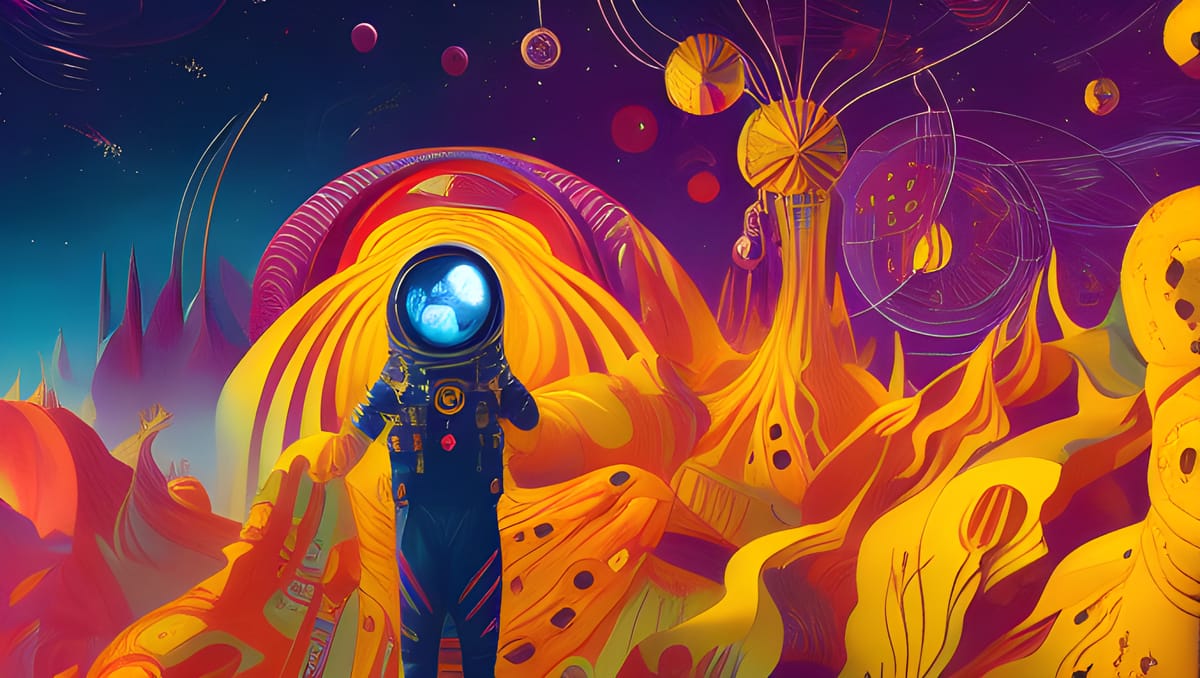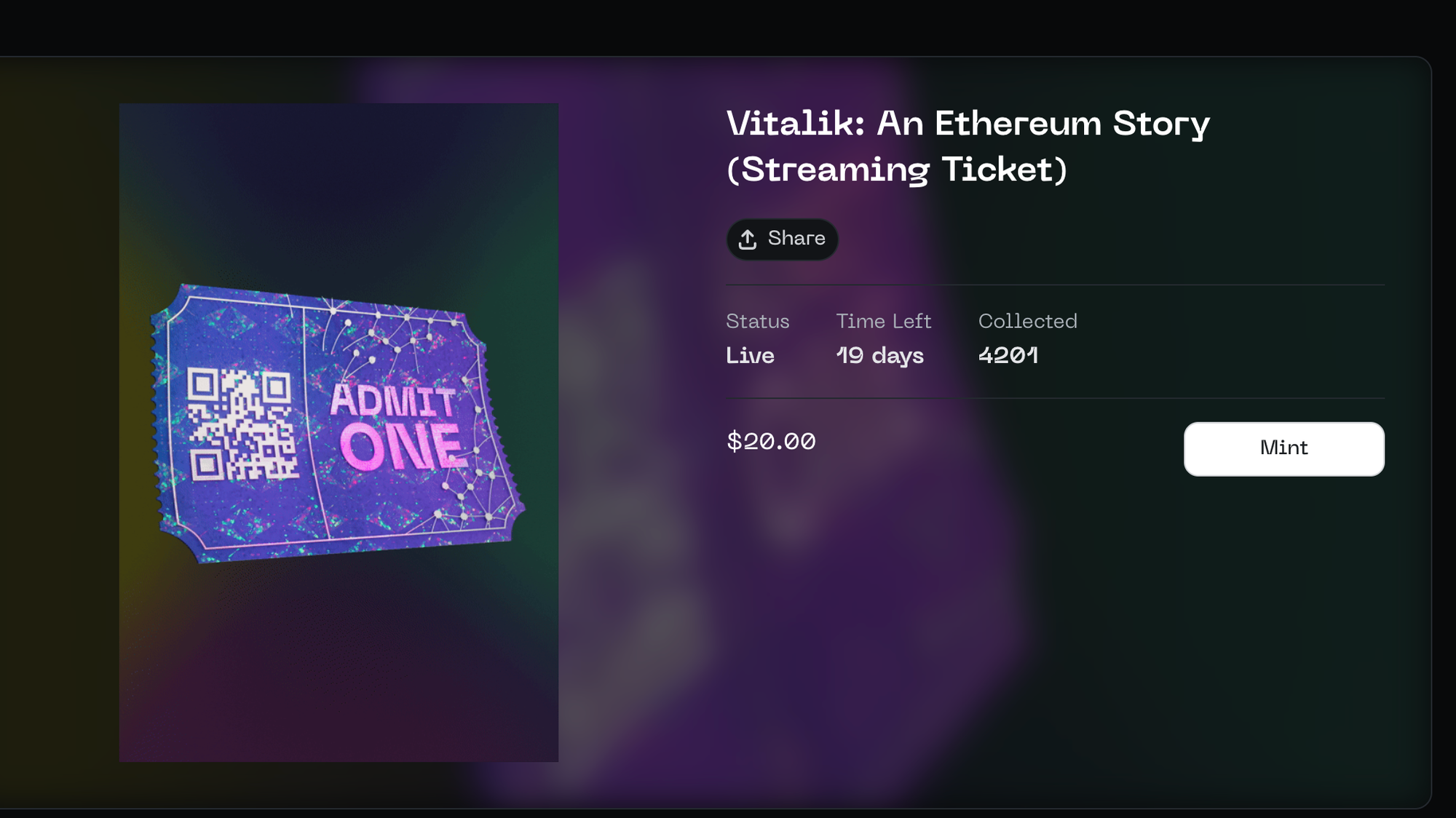Watching "Vitalik: An Ethereum Story"
Is Ethereum still the world's computer?

THE WEEK
In this issue
- Dispatches: Satoshi’s ID, XRP ETF (maybe), Uptober off the rails already, solo stakers, and monolithic chains outperforming modular
- Resource: A free Base database to help with deeper dives
- Framework: Ethereum doc is a good reminder about why crypto exists in the first place
DISPATCHES
News from the frontier
- I am Satoshi Nakamoto: HBO is releasing a documentary this week claiming to reveal Satoshi’s real identity.
- The ETF parade continues. Bitwise filed plans to release an XRP exchange-traded fund.
- Uptober? More like Downtober: Marketwise, the month is getting off to a rough start.
- Going solo: Solo ETH staking might get easier
- Monolithic models outcompeting: New research from VanEck makes the case that monolithic blockchains might be outperforming other architectures
RESOURCE
Use this simple database to learn more about projects building on Base.
It’s free, it’s a Notion table, and you can get it today.
OPEN MONEY
A film about Ethereum
I had a chance to watch the recently released documentary: “Vitalik: An Ethereum Story.”
The film is noteworthy (and worth checking out) for a few reasons:
- It’s approachable and accessible and helps put Ethereum, and other aspects of crypto, into a broader context. The film avoids technical details and largely steers clear of jargon and the eddies of explanations that are usually parts of larger works like this. It would be helpful to have some background in crypto to understand the broader context, but definitely not necessary.
- The story, as the name implies, is focused on Vitalik Buterin, the creator and unassuming leader of the Ethereum world. In a lot of ways, the timing of the film works well. What I mean is that it feels like the right time to revisit some of the old themes about Ethereum — and about how we got to where we are now. We’ll dive into more of those below.
- The film is available to mint onchain until October 20. It’s not super clear what will happen after that, but it does sound like the minting window will close. One of the things that I was most drawn to about this project was how it was published and distributed onchain. I’m trying to learn more about onchain publishing, especially longform work like a documentary. And while I was able to mint the film and then watch it, the experience was not super smooth, which is also something I’ll dive into.

A quick summary of Vitalik: An Ethereum Story
While most of the film centers on Vitalik, the origin story of Ethereum, and what the broad vision is for the tech, some of my favorite quotes from the film came from Ethereum researcher, Danny Ryan.
Early in the doc, Ryan says, “I’m either going to work on this stuff or I’m going to live in the woods. I don’t think there’s much in-between for me.” I can relate to this on a lot of levels and it made me think about how today’s version of Walden Pond is working towards a simpler, more peer-to-peer future.
Most of the first part of the film is trying to set up the story. The filmmakers pulled a montage of early Vitalik, dating all the way back to early Bitcoin meetups in New Hampshire in 2013 when Vitalik was still a teenager.
The framing for Vitalik’s interest in Bitcoin and eventually the reason why he created Ethereum feels like the very familiar early days crypto narrative.
Young Vitalik said things like, “Bitcoin is a unique technology and there is nothing else like it in the world.” As far as the implications, again back in the early days, he’s pretty clear, “People who have been disenfranchised by the existing financial and banking system will have an alternative.”
Eventually, Vitalik, who is still very young at this point, comes up with the idea that the tech underpinning Bitcoin enables more than just a new kind of digital currency.
Here's the trailer
He sums up the epiphany that would eventually become Ethereum like this:
”We can use cryptography and this big network of computers to build a platform and then people can just come and build things on top of it. Ethereum could be this invisible infrastructure layer where everyone can just interact with everyone else directly through a network. That would make it more possible to live a life completely without interfacing with banks or big evil corporations. It could be used to build this new internet.”
A good chunk of the film continues with this theme, or with reinforcing the idea about how the development of Ethereum is really about a new kind of paradigm for humanity.
For example, in one of the interviews, Justin Drake, another researcher with the Ethereum Foundations says, “The dream of the internet is to connect people without borders or the need for middlemen.”
One of the most interesting parts of the film during this stretch is how it delves a little bit deeper into Vitalik’s background. We see what he was like as a kid, and hear from his father, who we get a sense still plays a role in Vitalik’s life as an advisor or sounding board.
Interestingly, Vitalik was born in Russia in the years following right on the heels of the collapse of the Soviet Union. When he was six, he emigrated with his parents to Canada (and got into computers at the same time).
It’s also interesting to remember that the development and eventual launch of Ethereum came during a time when the Occupy Movement was a big deal. The underlying context of the time was that the global financial system had pulled a fast one on people — and that the system operated outside of the confines of democracy or control. “Too big to fail” during the preceding financial crisis of 2008 and 2009 in the minds of the people participating in the Occupy Movement was more like a euphemism for “get away with anything.”
With this context, Ethereum starts to make more sense. But, one of the biggest issues facing the technology is how it holds up beyond an ideology.
And this is where the film could have packed more of a punch. The story does cover issues such as energy consumption (but then seemingly resolves those issues in the closing scenes of the movie, just after Ethereum transitions from the energy-intensive proof-of-work to the less energy-consuming proof of stake).
But there’s not much in the way of covering scaling issues (such as the modular roadmap) or even bringing up issues about Ethereum’s economics, real examples of utility, or what the competitive landscape looks like and how that will shape Ethereum’s trajectory.
But it might also be a little unrealistic for one movie to tackle all of those topics. I mean, trying to cover the history and impact of Ethereum in 90 minutes is a pretty daunting task.
In the end, the film does provide a very high-level view of what Ethereum is all about and a good reminder of some of the big-picture vision of what crypto more broadly.
And while the story felt a little bit one-sided, there were certainly windows of realism or at least a little bit of cynicism.
At the top, I mentioned one of my favorite quotes from Danny Ryan. Here’s the other, which comes near the end.
”I think anyone who thinks that they know where it's all going is either lying to you or lying to themselves.”
A note about the onchain publishing aspects
One of the reasons I was excited about this project is because it was published and distributed onchain. (This free 5-day email course about what it means to move onchain is still live if you want to check it out.)
I thought getting the film onchain would be a great example of how to handle something of this scale.
While it was cool that I was able to mint a ticket to the movie (the fee was $20) and then use the ticket to gain access, I wasn’t able to mint the pass using Ethereum, which feels like a pretty big failure given the content of the movie.
I tried several times to use ETH-related currencies and tried two networks, but ran into issues each time. In the end, I had to use a credit card via a connected wallet to watch the movie.
While there could be a lot of explanations as to why this happened (or more accurately, didn’t happen), the experience dimmed my hopes slightly about the readiness of onchain publishing.
I’m on the lookout for other onchain publishing projects to try, so let me know if you have any recommendations.